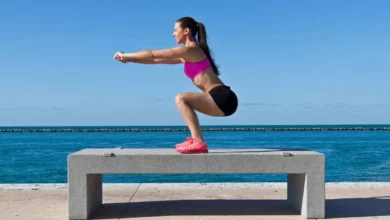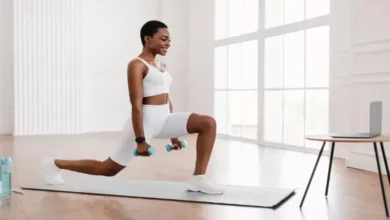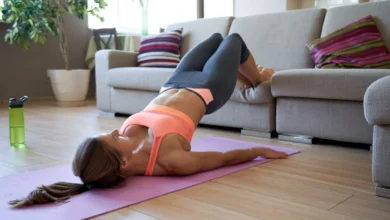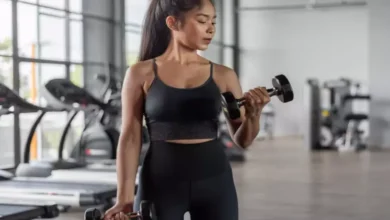The Secret to Longevity: 5 Essential Exercises to Keep Fit at Home After 40
5 Essential Exercises After 40
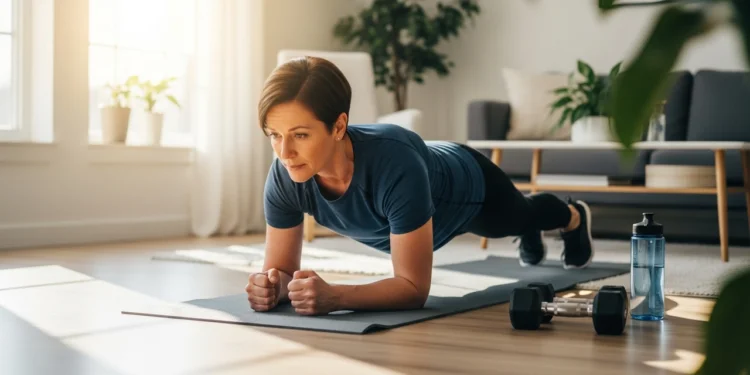
Reaching 40 marks a crucial transition for the body. Metabolism tends to slow down, and muscle loss, or sarcopenia, becomes a real concern, affecting strength, posture, and balance. However, this phase does not mean slowing down; it is the ideal time to intensify body care and ensure mobility, joint health, and functional strength for the decades to come.
The good news is that you do not need expensive gym memberships to achieve these goals. With a routine of simple, safe, and effective exercises, it is perfectly possible to stay in shape and gain vitality without leaving home.
This article presents the 5 essential exercises that work major muscle groups, are low-impact, and can be easily adapted for different fitness levels, forming the foundation of a functional and long-lasting workout after the age of 40.
READ ALSO:
- Quick Exercise for Lower Back Pain Relief: Simple Moves That Work
- Does Running Help You Lose Weight? How to Start and Progress Without Losing Your Breath
Follow our PAGE
Why Home Workouts After 40 Are Essential
Regular physical activity after the age of 40 is no longer just an aesthetic matter; it becomes a direct investment in longevity and chronic disease prevention.
Preserving Muscle Mass and Metabolic Health
- Combating Sarcopenia: The loss of lean mass affects the metabolic rate, causing the body to burn fewer calories at rest. Resistance training is the main driver for preserving and rebuilding muscle tissue.
- Weight Control: Increased lean mass accelerates metabolism, improves insulin sensitivity, and helps control body weight more effectively.
- Bone and Joint Health: Bodyweight exercises stimulate bone density, preventing osteoporosis. Additionally, muscle strengthening supports the joints, preventing pain and injuries.
The 5 Essential Exercises to Do at Home
These exercises work the entire body and focus on functional movements that mimic daily activities, improving overall conditioning:
1. Squat: The King of Strengthening
The squat is the most important exercise for maintaining body functionality. It simulates the act of sitting and standing, which is essential for autonomy in old age.
- Key Benefits: Strengthens legs, glutes, and improves balance and motor coordination. It is crucial for maintaining lower limb strength.
- How to Do It at Home (Adaptation): Start with the Chair Squat. Use a chair to guide the movement, sitting down and standing up slowly, keeping your spine straight. To progress, perform the free squat, controlling the descent and ascent without the help of the chair.
2. Plank: Stability and Posture
The plank is an isometric exercise that focuses on strengthening the core (abdominal and lumbar area), the body’s center of strength. It is vital for spinal health.
- Key Benefits: Improves balance, stability, and corrects posture. A strong core dramatically reduces lower back pain and the risk of falls.
- How to Do It at Home (Adaptation): Lie face down, supporting yourself on your forearms and toes. Keep your body straight like a board, without lifting or lowering your hips. If it is too difficult, support your knees on the floor to reduce the intensity. Start with 30 seconds.
3. Push-Ups: Upper Body Strength
Push-ups are one of the most effective exercises for the upper body, working the chest, shoulders, and triceps with body weight.
- Key Benefits: Increases functional upper body strength, essential for tasks like pushing heavy objects or lifting yourself off the floor. Helps prevent arm bone weakness.
- How to Do It at Home (Adaptation): For beginners, do Wall Push-Ups (inclined) or Knee Push-Ups. If you are more advanced, perform the standard push-up, ensuring your chest comes close to the floor and your elbows stay close to your body.
4. Crunches: Abdominal Focus
Although the plank works the core statically, the crunch concentrates effort on the abdominal muscles.
- Key Benefits: Strengthening of the superficial abdominal muscles and helps reduce lower back pain caused by abdominal weakness.
- How to Do It at Home (Adaptation): Lie on your back, with your knees bent. Place your hands behind your head (without pulling your neck) or crossed over your chest. Lift only your head and shoulders off the floor, concentrating the force in your abdomen. It is not necessary to sit all the way up.
5. Jumping Jacks or Marching in Place (Cardio): Conditioning and Metabolism
Including a cardiovascular element is vital for heart health, calorie burning, and metabolism.
- Key Benefits: Elevate heart rate, stimulate circulation, and are excellent for burning fat, which complements strength training.
- How to Do It at Home (Adaptation): Start with Marching in Place, lifting your knees high, for minimal impact. If your joints allow, perform Jumping Jacks to increase intensity and caloric expenditure.
Suggested Weekly Circuit Routine
These exercises can be performed in a circuit format to maximize efficiency and fat burning.
- Time per Exercise: 30 to 45 seconds of execution.
- Rest: 15 to 20 seconds between exercises.
- Sets: Repeat the complete circuit 3 to 4 times.
| Day of the Week | Duration (Minutes) | Main Exercises | Primary Benefit |
| Monday | 20 min | Squat + Plank + Crunches | Strength and Stability |
| Tuesday | 25 min | Jumping Jacks + Push-Ups + Plank | Conditioning and Endurance |
| Wednesday | 15 min | Light Walk + Stretching | Active Recovery |
| Thursday | 25 min | Squat + Push-Ups + Crunches | Global Strengthening |
| Friday | 20 min | Jumping Jacks + Plank | Metabolism and Balance |
| Saturday | 30 min | Full Circuit | Energy and Definition |
Conclusion: Movement is Synonymous with Youth
Keeping the body active after 40 is the true secret to vitality. Regular exercise, focused on functional and resistance movements like Squats, Planks, and Push-Ups, strengthens muscles, improves joint health, and ensures the necessary balance to prevent falls.
With discipline and a routine of 20 to 30 minutes a day, done in the comfort of home and without the need for expensive equipment, it is possible to age with strength, flexibility, and confidence. Consistency is always more important than intensity; start slow and ensure every repetition is performed with correct posture for solid and sustainable results.

Hello! My name is Alan Teixeira and I am passionate about helping people live healthier, more balanced lives. From mindful eating to daily habits that promote physical and mental well-being, I believe that small, consistent changes can lead to powerful transformations.
I created this blog to share practical tips, reliable information, and thoughtful insights that can inspire you to take better care of yourself—with balance, mindfulness, and positivity.
If you are looking to improve your health, nourish your body, and build a lighter, more fulfilling routine, you are in the right place. Welcome!

